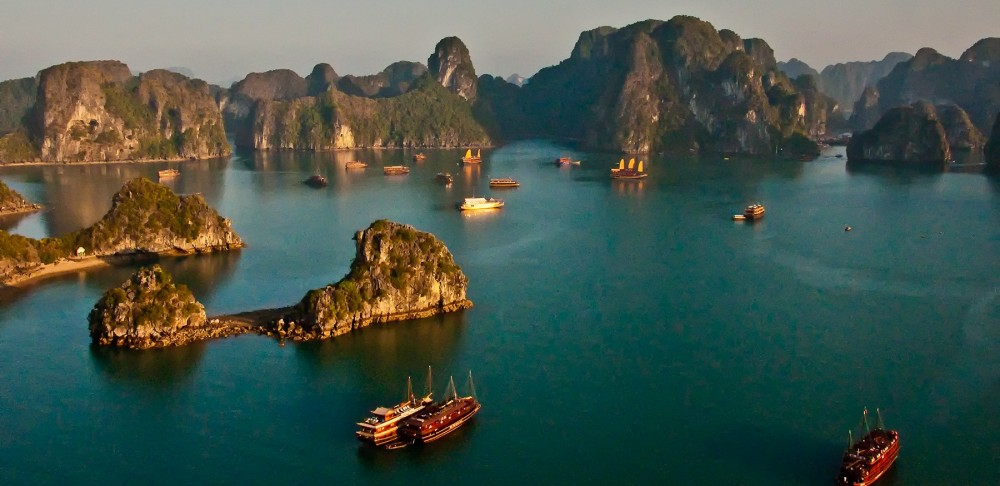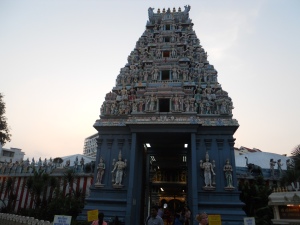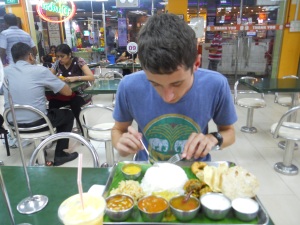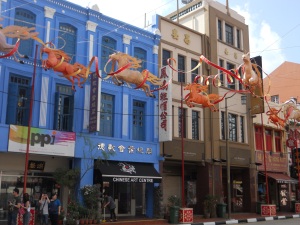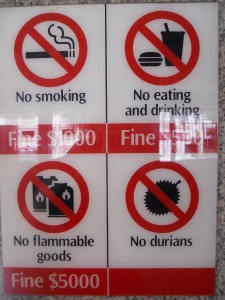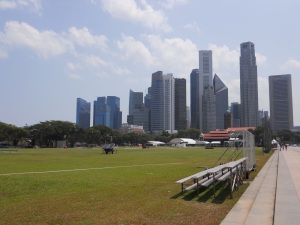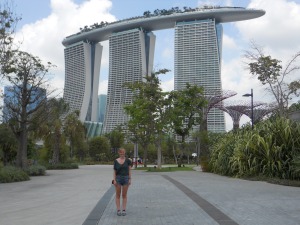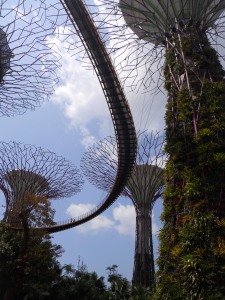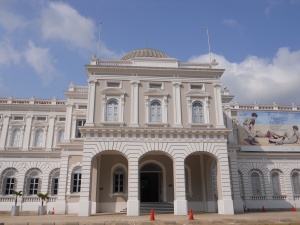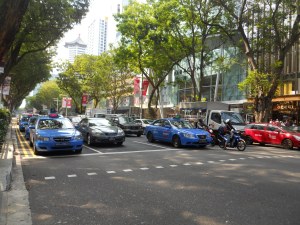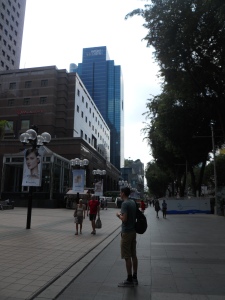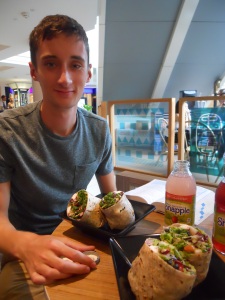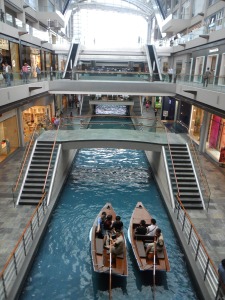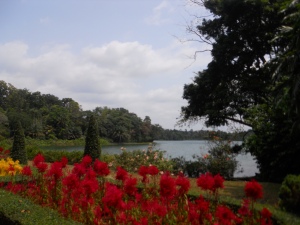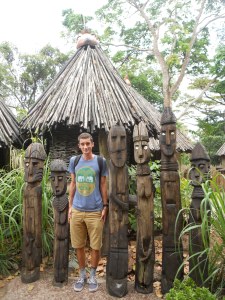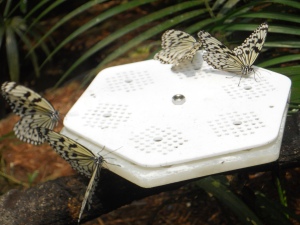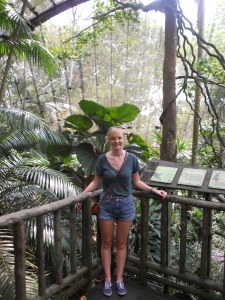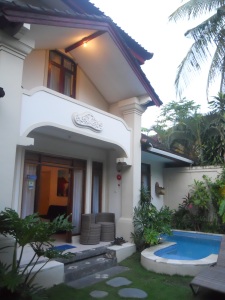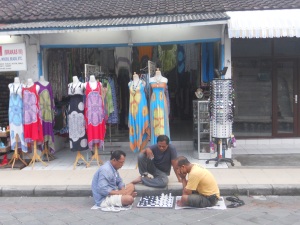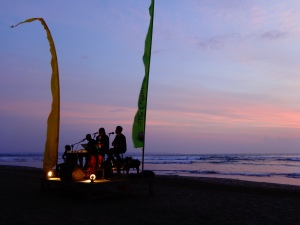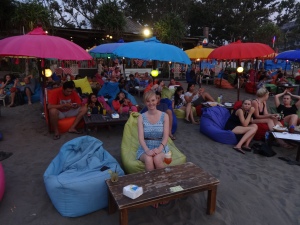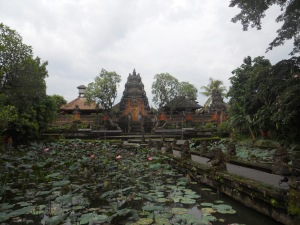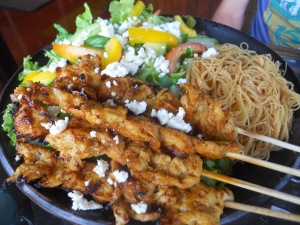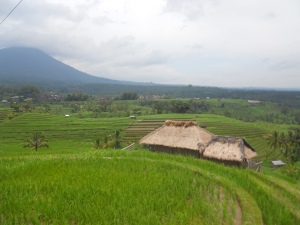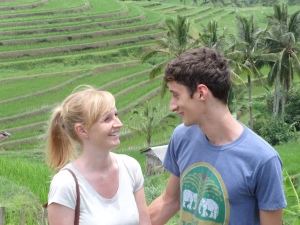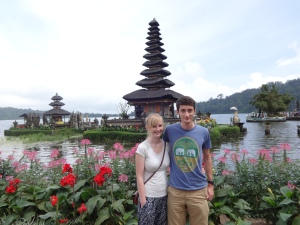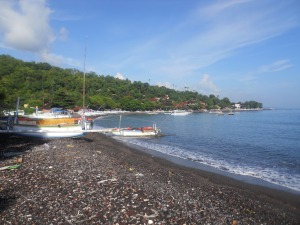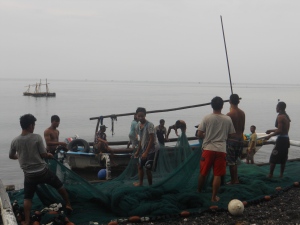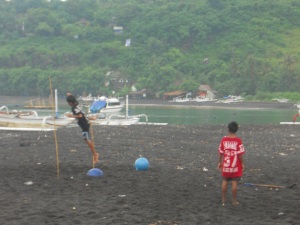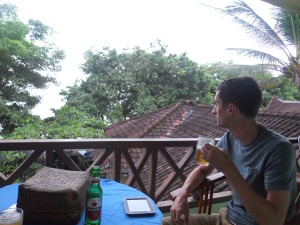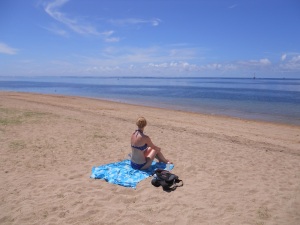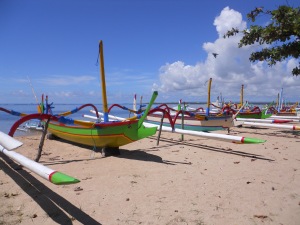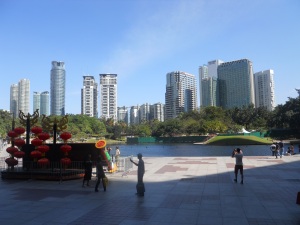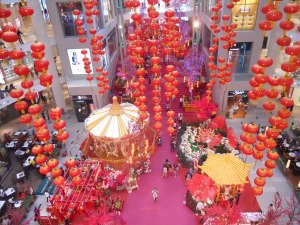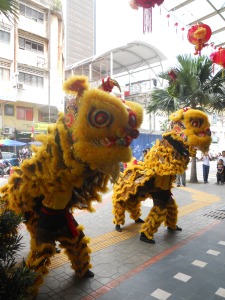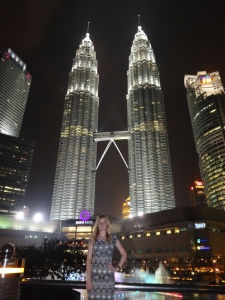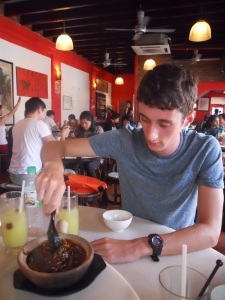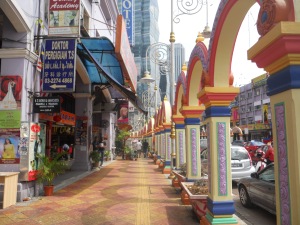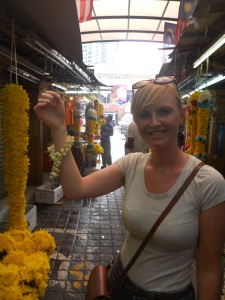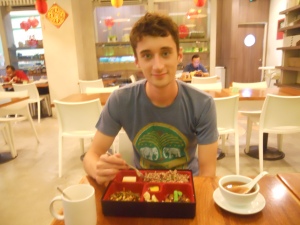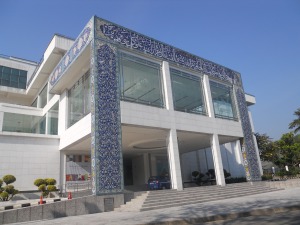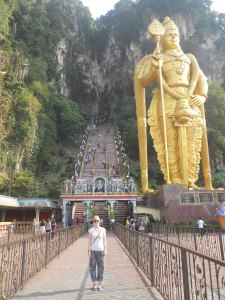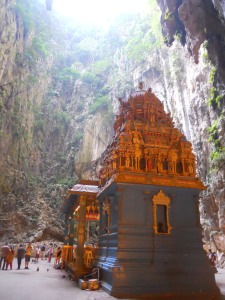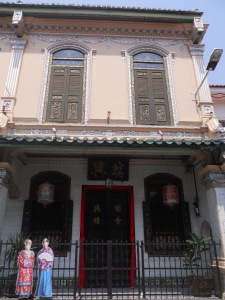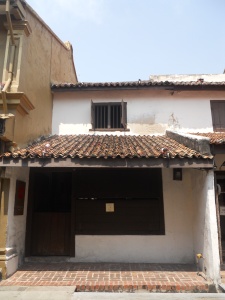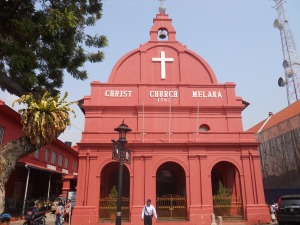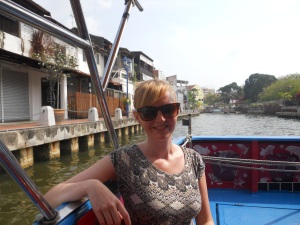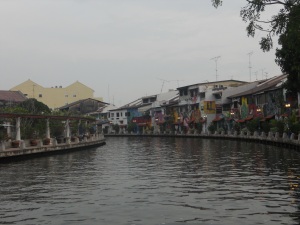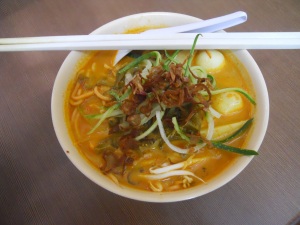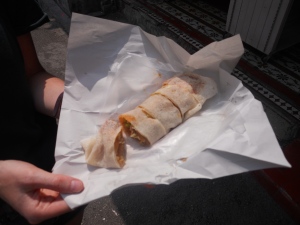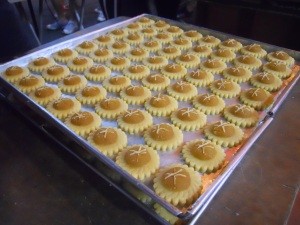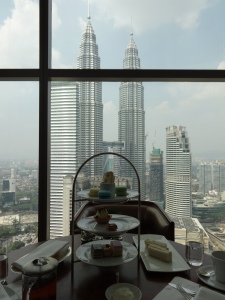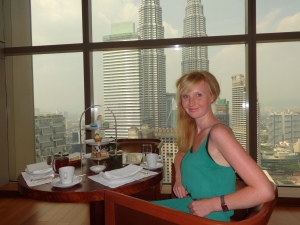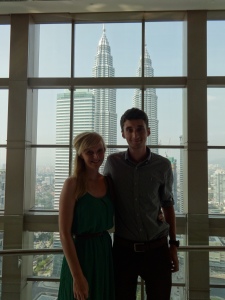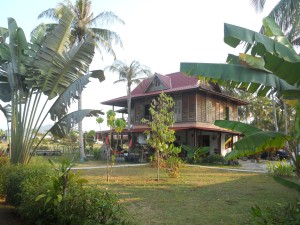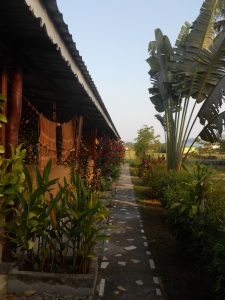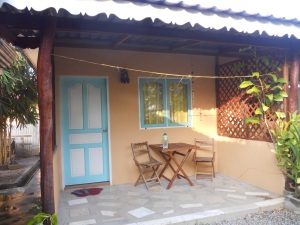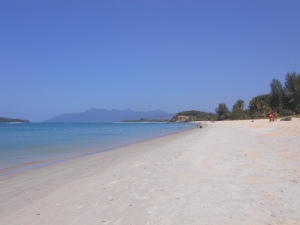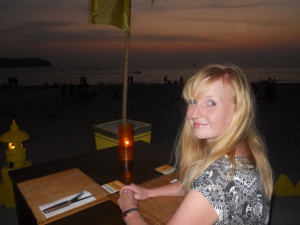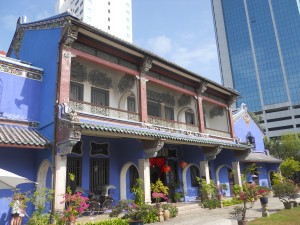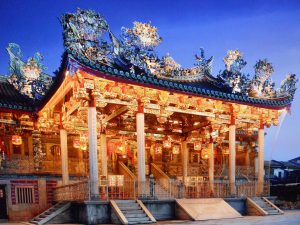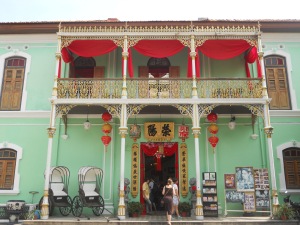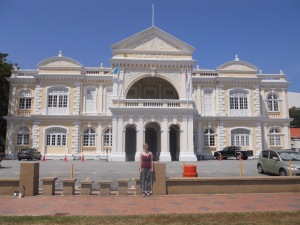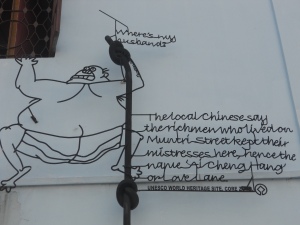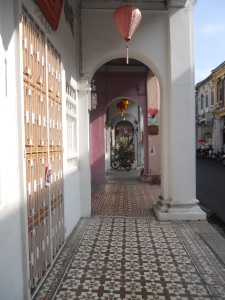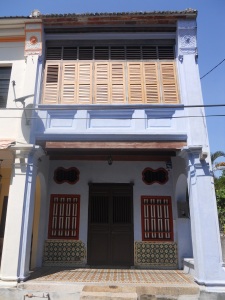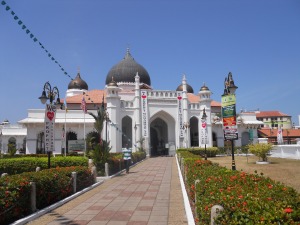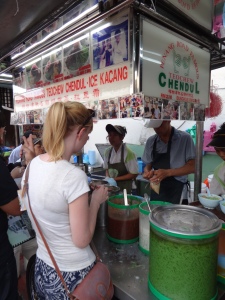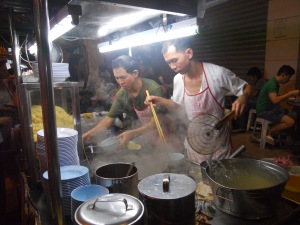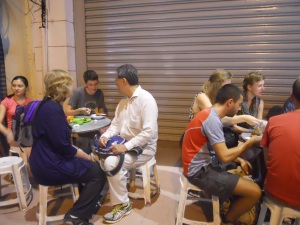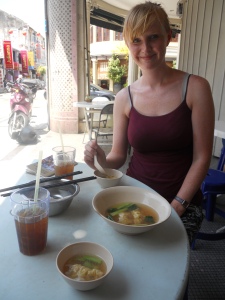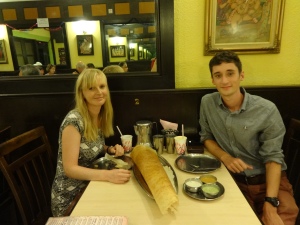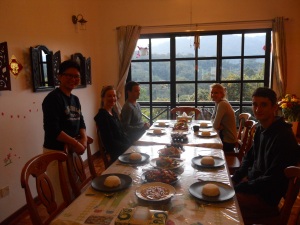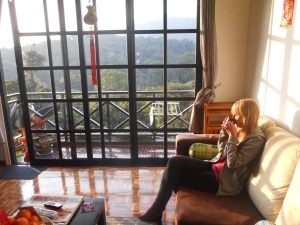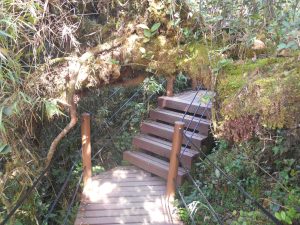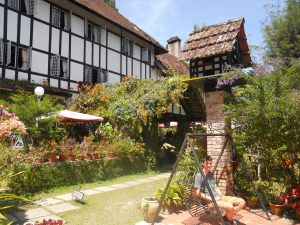Singapore is an incredible city. Modern, clean, cosmopolitan. It is efficient, but also friendly – after all, how many other airports give out sweets at passport control?! Unfortunately, it is also an expensive city, particularly in terms of accommodation. Not an ideal destination for two travellers running low on funds! Although we paid more than double our usual room rate, our hostel was one of the worst we have encountered. Let’s just say its standards of hygiene and behaviour were not up to Singapore’s usually strict standards… Still, the staff were nice and at least it encouraged us to go out and explore the city. Our first stops were Little India and Chinatown, which are like cleaner versions of their counterparts in other cities. Later, we headed to downtown or central Singapore.
Downtown Singapore, by which I mean the civic district and bay area, is the state-of-the-art Singapore that one imagines. Large buildings dominate this area, where elegant colonial buildings are juxtaposed with the very different beauty of skyscrapers. Strangely, any smaller shops and houses are entirely absent; instead, buildings are interspersed with open space, making the area feel rather soulless. The most iconic skyscraper, Marina Bay Sands, is rather ugly – it resembles a boat marooned on 3 towers – but on closer inspection reveals a peculiar kind of majesty. Marina Bay Sands is also worth a visit for the neighbouring Gardens by the Bay, complete with two domes and a ‘supertree’ skywalk. Although Singapore’s colonial buildings are outwardly far less contemporay, inside they have been sympathetically modernised. My favourite example of this blend of old and new was Singapore’s National Museum, whose traditional facade hides a new extension that allows light to pour into the building. Its exhibitions are also cutting-edge. Visitor audio guides are tablets that sync with exhibits and surround-sound films; ironically, such a modern device really helps you learn about the history of Singapore.
Our next stop was Orchard Road, Singapore’s Regent Street/Fifth Avenue. Here, endless malls line the wide street, but one can avoid the pavement altogether by walking from mall to mall via underground subway systems. As these malls are full of shops and restaurants, they are the perfect destination for experiencing Singapore’s national sports: shopping and eating. Although the malls’ beautifully presented and (by Western standards) reasonably priced food courts allowed us to partake in the latter activity, our dwindling bank balances hindered our participation in the former. Mostly, we just gazed longingly at luxury brands, though we did manage to buy some Levi’s for a bargain price!
Finally, we had a great day out at Singapore’s famous ‘cageless’ zoo. Half jungle and half landscaped garden, this zoo is one of the world’s finest. In places there really are no restrictions, with animals wandering across the path or leaping overhead, and in others you can enter enclosures. Where cages are necessary, they are cleverly designed to blend in with the path, ensuring close-up views of the animals. Although this was our most expensive outing, it was completely worth it to see such free and contented animals.
So, accommodation aside, Singapore has been an enjoyable end to our trip. Tonight we are going to a rooftop bar for sangria and tapas to toast our adventure. I find it difficult to comprehend that we have been away for five months and have mixed feelings about returning home. I’m sad the trip is over, longing for familiarity, nervous about the prospect of job applications. Most overwhelmingly, however, I feel excited about seeing my family and friends. Indeed, if there is one unifying aspect of every culture we have visited and one lesson that South East Asia has taught me, it is this: family is the most important aspect of our lives and our time with them is to be prioritised and prized. See you on Sunday morning England!
